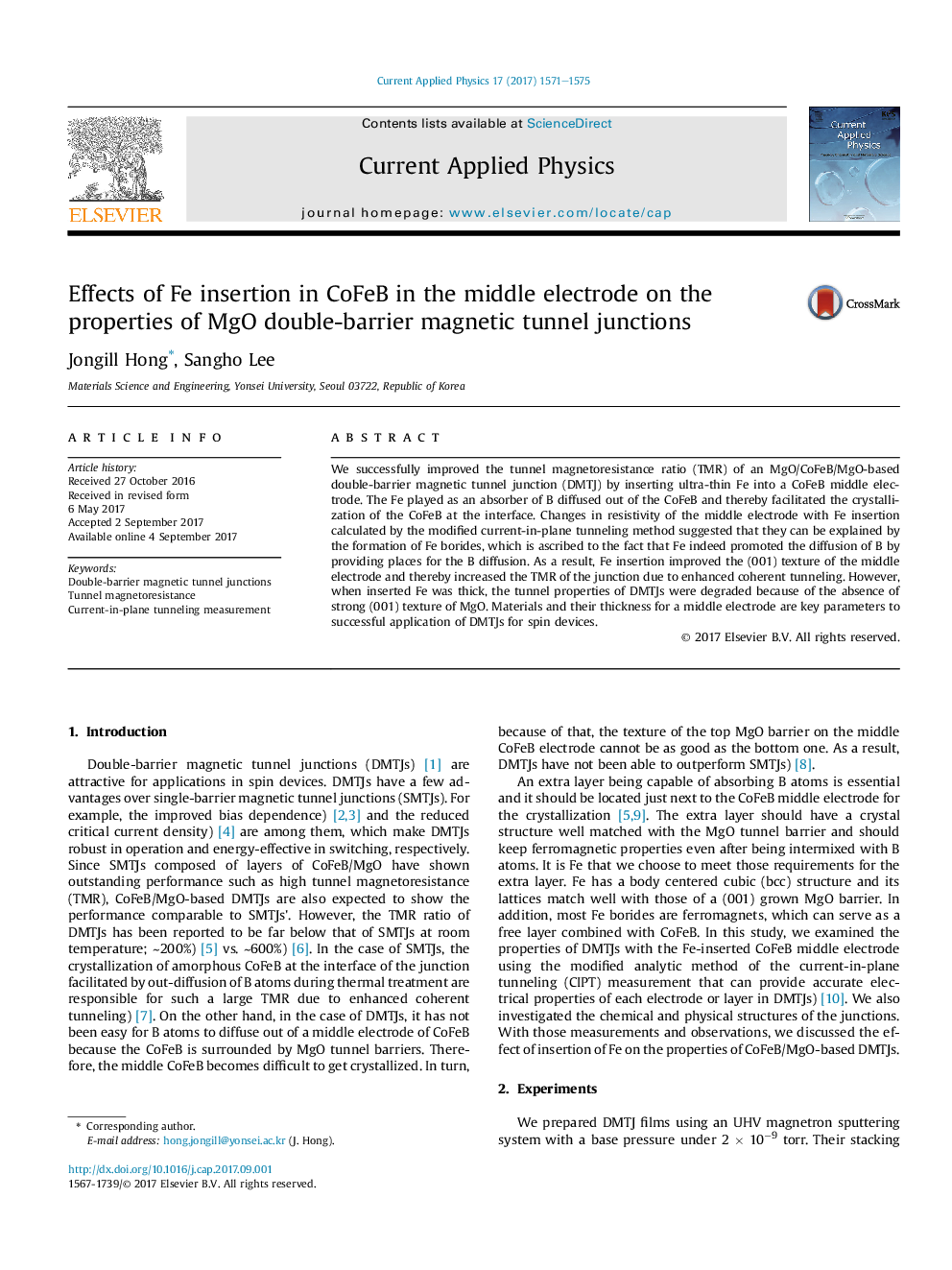| Article ID | Journal | Published Year | Pages | File Type |
|---|---|---|---|---|
| 5488713 | Current Applied Physics | 2017 | 5 Pages |
Abstract
We successfully improved the tunnel magnetoresistance ratio (TMR) of an MgO/CoFeB/MgO-based double-barrier magnetic tunnel junction (DMTJ) by inserting ultra-thin Fe into a CoFeB middle electrode. The Fe played as an absorber of B diffused out of the CoFeB and thereby facilitated the crystallization of the CoFeB at the interface. Changes in resistivity of the middle electrode with Fe insertion calculated by the modified current-in-plane tunneling method suggested that they can be explained by the formation of Fe borides, which is ascribed to the fact that Fe indeed promoted the diffusion of B by providing places for the B diffusion. As a result, Fe insertion improved the (001) texture of the middle electrode and thereby increased the TMR of the junction due to enhanced coherent tunneling. However, when inserted Fe was thick, the tunnel properties of DMTJs were degraded because of the absence of strong (001) texture of MgO. Materials and their thickness for a middle electrode are key parameters to successful application of DMTJs for spin devices.
Keywords
Related Topics
Physical Sciences and Engineering
Physics and Astronomy
Condensed Matter Physics
Authors
Jongill Hong, Sangho Lee,
